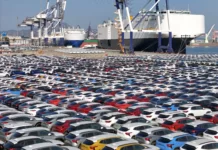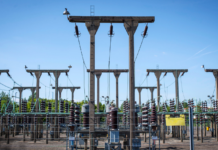When the HBL Pakistan Super League (PSL) was first announced in 2015, few would have bet on its survival, let alone its success. The odds were grim. Cricket in Pakistan was in exile. Since the harrowing 2009 terrorist attack on the visiting Sri Lankan team in Lahore, international sides had refused to set foot on Pakistani soil.
The Indian Premier League (IPL), already a global juggernaut, dominated the franchise cricket landscape. And within Pakistan itself, political instability meant that governments—and even cricket board chairmen—changed with dizzying frequency (there have been governments and five chairmen of the Pakistan Cricket Board in the ten years that the HBL PSL has been around).
Yet, against all expectations, the HBL PSL didn’t just survive—it flourished. It became a talent factory for Pakistan’s cricketing future, and, most remarkably, the catalyst for the return of international cricket to Pakistan. Perhaps most importantly, however, the league has been the board’s biggest revenue generator, often contributing up to half of its total income. It weathered political turbulence, security concerns, and the logistical nightmare of shifting from UAE-based exile to home soil. Throughout all this it has been the most reliable financial lifeline for the cricket board year in and year out.
What started as a reluctant export, with its inaugural season played entirely in the UAE, has since evolved into a cultural and commercial mainstay. And perhaps more than any politician or administrator, the PSL has played the most vital role in bringing international cricket back to Pakistan. In doing so, it has also become the heartbeat of the PCB’s finances, a rare story of institutional consistency and commercial imagination in an otherwise tumultuous landscape.
But in all this time, there have been a few unsung financiers to this success.
The HBL PSL didn’t just survive; it rehabilitated Pakistan’s cricketing reputation. It lured foreign players back, proved the country could host big matches safely, and laid the groundwork for the Asia Cup and Champions Trophy. But in the past 10 years, the benefits of this success have not reached the franchise owners. While the tournament is a financial success, team ownership has been a dicey proposition. With four out of six teams running losses (and a couple running big ones), the franchises are now feeling it is time for them to get their due for their initial belief.
And the timing might just be perfect. From 2017 onwards, the HBL PSL was the largest revenue generator for the cricket board every single year. Even in years where the board made losses, the HBL PSL kept them solvent and provided as much as 50% of their revenue. But a shift is now underway. Last year marked the first time since 2017 when no longer the PCB’s top earner. The return of international cricket—thanks in large part to the HBL PSL’s success—has dethroned the league. Last year, hosting the Asia Cup and other bilateral series brought in Rs 5.5 billion, eclipsing the PSL’s Rs 3.55 billion. While the financials for 2025 are not in yet, it is nearly certain that the revenue from the HBL PSL will be eclipsed again because of the hosting fees from the ICC Champion’s Trophy.
Of course, this newfound international revenue exists because the HBL PSL made Pakistan credible again. But credibility alone doesn’t pay the bills for franchise owners. If the PCB continues to treat the PSL as a cash cow while teams struggle, it risks alienating the very investors who made the league possible. The board must recognize that the PSL’s next phase shouldn’t be about extraction—it should be about partnership. Which is why it is important to understand exactly how the HBL PSL came to be this profitable for the board, and this much of a gamble for the franchise owners.
The PCB is an autonomous government entity, yes, but it is meant to operate like a corporation. It hires players, coaches, and staff. It pays the bills, organizes tours, manages stadiums, and most importantly, generates revenue to promote cricket across the nation. In an ideal world, it should make a profit. That profit, in turn, should be plowed back into nurturing grassroots talent and improving infrastructure.
But for decades, the PCB limped from one crisis to another. Terrorism drove international teams away. Mismanagement plagued domestic cricket. The board relied heavily on payments from the International Cricket Council (ICC), including a record high of $17 million (Rs 4.24 billion) in 2023. But the real game-changer was the HBL PSL.
The business of cricket
There are a few basics you should understand for this story. Firstly, the Pakistan Cricket Board is an autonomous government entity with its own constitutions. What most people do not understand is it is supposed to be run like a corporation. The cricket board handles money coming in from cricket played in Pakistan, it hires players, coaches, staff, stadiums etc and pays the bills. At the end of the day, they are ideally supposed to make a profit which they can then pump back into promoting cricket in Pakistan.
The HBL PSL has been the reason this has been possible in Pakistan over the past ten years. The board has a few sources of income. They receive an annual payment from the International Cricket Council, which is Pakistan’s share of revenue from international tournaments such as the world cup etc, and which was a record high $17 million last year, shown as Rs 4.24 billion on the PCB’s books. For 2023, this was the singest largest source of money that the board got. The second biggest source of revenue was the HBL PSL. It is the single most lucrative event that the PCB organises, and in 2023, the tournament brought in Rs 3.55 billion in revenue for the PCB, and after expenditures, the board made Rs 1.56 billion from the tournament.
The HBL PSL has been lucrative for the PCB nearly from the very beginning. The six franchises participating in the tournament agreed to a 10-year contract to lease rights to the franchise for different amounts. They pay this fee in yearly installments. The highest yearly fee is $6.35 million by Multan, and the lowest is $1.1 million for the Quetta Gladiators. The PCB uses this money to organise the tournament, provides grounds, accommodation, supplies, and bears other costs such as broadcasting. Meanwhile the teams are responsible for paying their own players and staff. The tournament itself makes money through broadcasting, gate receipts, sponsorships, and more. Now the revenue from these sources is all put into a central pool which is then divided between the teams and the board. Each team gets around 15% of this central revenue pool and the board gets 5%, but they also get the entirety of the franchise fees.
How the HBL PSL saved Pakistan cricket
This scheme has worked well for the PCB. Just take a look at what the HBL PSL has meant for them financially over the past few years. In 2018, the cricket board made a loss of Rs 53 lakhs. Out of a total revenue of Rs 5.13 billion, the board received Rs 2.2 billion from the franchise tournament, meaning it was responsible for 43% of the board’s revenue that year. Now, the tournament itself saw Rs 1.3 billion come in that year from broadcasting, sponsorships, and other revenue streams into the central revenue pool. Of this, the PCB took a hefty cut of Rs 56 crores, leaving the teams to split Rs 74 crores six-ways. The remainder of their revenue came from the Rs 1.55 billion in franchise fees that the six teams paid.
This means that in 2018, the HBL PSL had a total revenue of Rs 1.3 billion, the costs associated with it were Rs 1.6 billion, meaning it made a loss of around Rs 30 crores. Despite this, the PCB made money off of it due to the franchise fees. The franchises were not particularly happy about this.
The franchise owners were naturally not very happy with this. A colourful assortment of characters including media tycoon Salman Iqbal, Haier and MG owner Javed Afridi to just name two of the more public figures to own teams, the resistance was almost immediate. But that did not stop the PCB from continuing to milk the tournament as much as it could.
In fact, in 2019 the PCB made a profit after some years. The PCB saw revenues of Rs 11.3 billion, and a before tax profit of Rs 5.34 billion. The year also saw the HBL PSL grow, posting a total revenue of Rs 3.31 billion for the PCB. The tournament’s central revenue pool also improved, swelling to Rs 2.78 billion of which the board took a cut of just over Rs 1 billion. This left the franchises with just under Rs 30 crores each, while they had paid the PCB a cumulative Rs 2.12 billion in franchise fees.
In 2020, the PCB collected revenue worth Rs 9.34 billion and posted a before tax profit of Rs 4.31 billion. The HBL PSL was once again the largest contributor to this overall revenue with the PCB collecting Rs 3.62 from the tournament, making it responsible for 38% of the overall revenue.
The HBL PSL continued to be a very profitable business for the PCB. The board made Rs 3.63 billion from the tournament in revenues, including Rs 2.43 in franchise payments and around Rs 1.1 billion in central revenue share, basically the same as last year. The franchise fee increased from last year slightly because of the devaluation of the rupee. Overall, the central revenue pool actually decreased from Rs 2.78 billion to Rs 2.57 billion because of fewer sponsorship payments thanks to the tournament being cut short because of Covid-19. This meant further trouble for the teams, which were paying higher fees and a smaller share in the central revenue pool.
Since 2018, the PCB had been using revenues from the HBL PSL to slowly shore up the cash reserves they had in the bank. In 2018, the board had a general fund bank balance of close to Rs 9 billion. By 2019 these rose to Rs 13 billion, and by 2020 they had gone to Rs 17 billion. At the end of 2023, this figure stood at over Rs 20 billion.
Thanks to this, the PCB was able to get through the difficult year that was 2021. The board had total revenues of Rs 7.9 billion and posted a loss of Rs 75.6 crores, and these too were only there because the board decided to give some temporary relief to the beleaguered franchise owners of the HBL PSL.
Another major perk was the tournament being in Pakistan. Not only was this bringing international cricket back to Pakistan, the expenditure on the tournament was falling since the UAE did not need to be paid anymore.
Changing times
There was a problem in all this. Back in 2015 when the teams had first been auctioned, the PCB had set fees for the next 10 years and they would take these fees in dollars from the five franchises. Overall, it was a payment of $8.3 million a year with the priciest team, Karachi, paying $2.6 million and the cheapest, Quetta, paying $1.1 million. The problem was the dollar was getting out of control. The teams had agreed to the deal at a time in 2015 when the dollar was at Rs 105, and by 2021 it had risen to close to Rs 175. Since all of the owners were Pakistanis and their businesses were in Pakistan, they went from paying a collective Rs 88 crore a year to paying a collective Rs 1.4 billion by 2021. On top of this, in 2017, the PCB also introduced a new team, Multan Sultans, to the tournament worth $6.35 million a year.
The addition of a sixth team also meant the central revenue pool would be divided seven ways now instead of six, with the PCB still taking the single biggest share at over 20% every year. The PCB was now making more off franchise fees while the franchises were making less and less. They were suffering massive losses, particularly since the central revenue share didn’t even cover fees let alone the costs of players, staff, marketing, equipment, and whatnot. Upset by this, the teams simply stopped paying their dues on time causing some cash flow issues for the PCB. Eventually, the board had to go back to the negotiating table and it was decided the PCB would reduce its share in the central revenue pool to 5%, which placated the teams for the time being. It was also decided that the franchise fee would be fixed and the dollar rate for the teams would be set at the existent Rs 175, which in hindsight was a very good negotiation win for the franchises.
The effort was led in particular by Multan, Karachi, and Lahore, the three teams with the highest franchise fees. At this point, with a central revenue pool share of over Rs 1 billion to each team, smaller teams like Peshawar and Quetta with franchise fees around $1.1-1.2 million were very happy.
This brings us to more recent times. What you have seen above is a dive into how the HBL PSL very quickly became the biggest revenue source for the PCB and helped it become one of the richer cricket boards in the world outside of the Big Three consisting of Australia, England, and India.
Eventually, however, the franchises grew tired of bankrolling the PCB and wanted more of a chance to earn money from the tournament in which their teams had just been bleeding it up until now. The negotiation of 2021 meant the PCB could say goodbye to the steadily increasing flow of money from the HBL PSL they had gotten used to. Revenues from the tournament grew at a rate of 19.98% over three years. But with the dollar pegged and the central revenue pool share cut down, the board could expect less money or at best around the same.
In 2022, the PCB saw revenues of Rs 9.03 billion. The increase from last year can be attributed to the revival of international cricket and payments for Pakistan’s participation in major tournaments. The HBL PSL still had a pretty big portion in the overall revenue. In fact, it had the largest portion at 38% of the total revenue at Rs 3.34 billion. This was, however, the first time that revenue from the HBL PSL fell for the PCB. This did not even happen in 2021 when they paid a big chunk of their central revenue pool share to the franchises.
The tournament actually did very well in 2022. The total central revenue pool ballooned to a massive Rs 5.4 billion, but this year the PCB got to keep a 10% cut that came out to Rs 57 crore under the new 90-10 split that they had in place. This more than halved their central pool revenue which was Rs 1.2 billion in 2021, but meant the franchises were making more money. They were still getting their regular Rs 2.67 billion in franchise fees.
The real rewards
International cricket has a lot to offer financially. The biggest factor has been the return of cricket to Pakistan and the money coming in from the ICC as a result. In 2023, the PCB saw the largest amount of revenue it has ever seen at Rs 12.45 billion, and posted a profit of nearly Rs 4 billion at the end of the year. This is the second largest profit the board has ever made for a financial year. Of this total revenue, the HBL PSL contributed the expected Rs 3.55 billion.
The share in revenue has fallen because the board has seen a significant uptick in income coming in from international tours to Pakistan. In fact, the biggest contributor to the PCB’s revenues in 2023 was not the HBL PSL, but international payments made to Pakistan by the ICC and ACC. These amounted to Rs 5.43 billion, making up nearly 33% of the total revenue. For context, this is not even close to the highest share in revenue the HBL PSL has had in any single year which we saw was 48%, but it is still big. So why the sudden increase?
The debt that is owed
This is not the first time Profit has done a story on the PCB or the HBL PSL. It is also not our first long-term analysis of the board’s financials. The reason we have looked at just the board’s financials (and chosen to look at the HBL PSL’s current financial position alone in a different story) is because the PCB has been the biggest winner from this tournament. They have made money and been able to bring cricket back to Pakistan.
The reality is that now is the time for the board to pay back a debt they owe to franchise owners. The HBL PSL’s success was never guaranteed. It was born in exile, nurtured amid political chaos, and sustained by franchise owners who often lost money year after year. Their investment wasn’t just financial—it was a bet on Pakistan itself.
That bet paid off. The HBL PSL didn’t just survive; it rehabilitated Pakistan’s cricketing reputation. It lured foreign players back, proved the country could host big matches safely, and laid the groundwork for the Asia Cup and Champions Trophy. The PCB’s newfound international revenue? It exists because the PSL made Pakistan credible again.
But credibility alone doesn’t pay the bills for franchise owners. If the PCB continues to treat the HBL PSL as a cash cow while teams struggle, it risks alienating the very investors who made the league possible. The board must recognize that the HBL PSL’s next phase shouldn’t be about extraction—it should be about partnership.
The PCB now stands at a crossroads. With international cricket’s revival, it has a rare opportunity: to share the wealth with franchises that have shouldered losses for nearly a decade. A more equitable revenue model—whether through higher central payouts, better commercial rights, or a revised profit-sharing structure—wouldn’t just be fair; it would ensure the HBL PSL’s long-term health.
But if the board resists, the consequences could be severe. Franchise owners aren’t charities. If the financial burden remains one-sided, some may walk away—and the HBL PSL’s stability could unravel.
The choice is clear. The PCB can either acknowledge the PSL’s role in its revival and reward those who made it happen—or it can take their loyalty for granted and risk the league’s future.
After years of defying the odds, the HBL PSL deserves more than just survival. It deserves a deal as strong as the foundation it built.

























